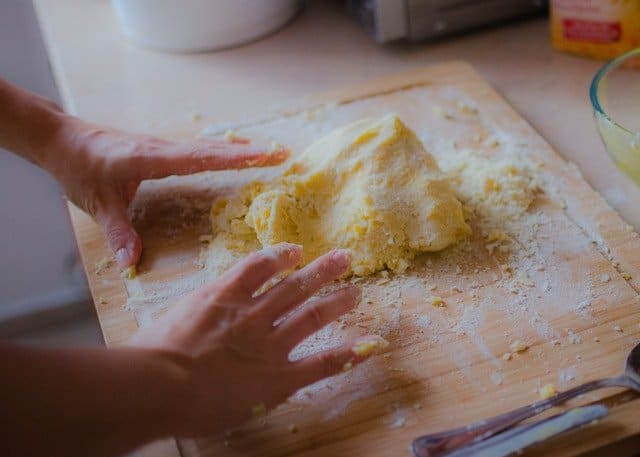In 2015, I was hit by a car while pushing my broken down car on the freeway.
My body was flung 20 feet across the paved road. I had broken my jaw, collarbone, nose, and I received an awfully serious traumatic brain injury. The brain injury impacted my memory so severely… it had left me with the inability to recall what I had done the day before…
I was a college student at the time of the accident and I was terrified of my future. How was I supposed to finish school? Find a job? Maintain a successful career?
My poor memory sparked a fascination with understanding how our brains were wired to remember things. I began to ruthlessly devour all sorts of books, videos, and articles on memory. I studied mental athletes and people who participate in memory competitions to understand how they could remember and recite thousands of random words or numbers in a specific order. I sought to discern why I would remember certain things and completely forget others. I was driven to find out if there were methods I could use to improve my atrocious memory.
Recommended reading: Memory Models in Psychology – understanding human memory
I learned a lot about memory through the years in my endeavor to improve my ability to recall things. I would love to pass them along to you. If these techniques worked for me, even with my traumatic brain injury, I am sure they could drastically improve your memory too. Here are some memory tricks I learned to remember things better.

The Baker/Baker Paradox
One of the memory books I picked up was Moonwalking with Einstein by Joshua Foer (1). Joshua Foer was a freelance journalist and the 2006 U.S.A. Memory Champion. In his book, he wrote about the Baker/Baker paradox.
The Baker/Baker paradox is an experiment that was run by researchers. The researchers took two different people and showed them the same picture of a man.
One person was told the man’s last name was Baker whereas the other person was told the man was a baker, someone who bakes bread.
A couple of days later, both people returned to the laboratory and they were asked about the man. The person who was taught that the man in the picture was a baker was much more likely to recall details (1) p.43. Why is this?
This is because the mind does not have many connections or predisposed associations to the last name Baker. The name is, for all practical purposes, abstract and arbitrary. So, automatic associations are more difficult to be triggered. However, when a person is told the man is a baker, there are already pre-encoded associations to a baker. For example, the baker probably automatically prompts associations of hot fresh bread, cakes, cookies, bakeries you’ve seen before, the smell of bread, your favorite pastries, etc… All of these associations will serve as a trigger to retrieve the original piece of information you originally wanted to remember. These bits of information form a net which supports itself.
This study highlights a fundamental aspect of human memory – improvement trick – associations, context, and a network of information grounds memory and makes it stronger.
Why not use this to improve memory? Create an association and a context… your desired information will live in your brain more reliably.
Remember, the more associations you can create with whatever information you want to store, the more likely you will remember it. The next time someone tells you their name, try to think about as many associations related to that name as you can.
Let’s say someone introduced themselves as Peter.
Conjure up all the associations in your head of the name Peter. Bring to life images perhaps of Peter Pan, Peter Griffin, Peter Parker, Peter your childhood friend or Peter an old coworker to the forefront of your mind. Encrypting those associations into your head will give you a good chance of remembering that person’s name is Peter.

The Memory Palace Technique
Another cool trick that is popular and commonly used by memory athletes is the memory palace technique. This is also the key to Sherlock’s amazing memory.
A memory palace is simply an imaginary location in your mind where you can store mental images to remember various facts, numbers, lists and all sorts of other things. The imaginary location could be a familiar place like your home, your school, office or workplace. This familiar location will become your memory palace to store information.
Here, let’s try it out. We are going to encode this short random shopping list into your memory.
- A dozen eggs
- Toilet paper rolls
- Bananas
- A can of sardines
- A blender
- A new watch
- Cologne
Pull up the image of your home in your head. I want you to imagine the front of the house in as much detail as possible. Visualize the driveway, the lawn, the walkway, etc.
Then, I want you to walk to the front door. Take into account the color of the door, the material, the aesthetics. Recall every aspect of that door with as many characteristics as possible. Now I want you to place the carton of a dozen egg in front of the door. Feel the texture of the carton of eggs and the weight of it in your hands.
Now imagine hearing a stampede of people running. You turn around to look at a hundred naked men and women running towards you. They were a congregation of nudists running a nudist marathon… but now they are coming to your front door. Picture the sweat dripping from their bodies, the jiggling of their skin, the heavy breathing and imagine the musk of their perspiration lingering in the air. Now notice that they are all holding their own rolls of toilet paper for the race.
Form this mental image with as much detail as possible.
You quickly open your door and walk into the first room of your house. Maybe it is your living room or family room. Take everything in the room into account. The coffee table, picture frames, windows, floor mats, the chimney, the furniture perhaps. Then I want you to walk over and place a bunch of bananas next to the chair in the room.
Follow me along into the kitchen and place the can of sardines onto the dining table. Again, envision all the characteristics of the room and the can of sardines. The cool touch and the weight from the can of sardines.
On your own, continue to insert the items in various rooms of your house. Use the different rooms and visualize how you would walk through the spaces, place the items in specific locations.
Now, try to see if you can recall the list from your memory.
Really, try it out right now.
Why does the memory palace technique work?
This technique works because humans have great spatial memory – a memory system to remember locations. For example, if you were at a party at your buddy’s house and you put your keys by the picture frames, at the end of the night, you would remember to go back to those picture frames to grab your keys.
Those picture frames held your keys. Or if you were to put your coat on a chair, you would just go back to that chair to get your coat. This is exactly why the memory palace works. You could insert items in your mind by using specific locations in your memory palace.
Note that, while building the memory palace, I had you visualize a crowd of nudists running towards you. This is because humans have a tendency to better remember bizarre or unique events and things (2). Think about it for a second. I bet you cannot remember what you ate two weeks ago for dinner unless that dinner was special or unique.
Give it a go. The more concrete you can envision the details of your memory palace, the better you can store items/information at different locations. Go around your house and label specific location.
Here is a starting point:
Spot 1: your doorstep.
Spot 2: the picture frames close to the entrance of the door
Spot 3: a coat rack
Spot 4: the couch
Spot 5: the table stands
Spot 6: a lamp
You can make it a general rule of thumb to always start from the left and make your way to the right of the room, so you never doubt your order. You can hypothetically insert and store just about any information into each of these areas.
Now you know the memory palace technique. Continuously practice and you will be able to create scenes/paths faster and faster. You can even make a huge palace with many rooms and many locations in each room. In fact, you can make many memory palaces to remember tonnes and tonnes of boring information. I kid you not, you can actually remember the contents of a big fat book with this technique. The memory palace is one of the best and most scalable memory techniques you can use.

The Capacity of Images
An experiment was run on some college students that consisted of a series of presentation slides. The students were asked to memorize the images shown on the slides as the instructor clicked through. Each image was shown for less than half a second.
The first image was the infamous image of Muhammad Ali standing over Sonny Liston. The next image was Neil Armstrong taking his first steps on the moon. Then, Friedrich Nietzsche’s book cover, On The Genealogy of Morals and then a red rose.
The instructor quickly clicked through approximately 30 images at a lightning fast pace. Each picture appeared and then disappeared right away, so there was very little exposure to the image.
Afterward, the instructor asked the students if they memorized all of the images. One student shouted out “not a chance!” as the classroom giggled. The students all found it hard to believe that they could memorize all those images in that short span of time.
The instructor then put up a new set of slides. These slides had two images. The instructor asked the students which image they had seen before. One of the images was of Muhammad Ali standing over Sonny Liston and the other image was a fizzing Alka Seltzer tablet. (1) p.28
The students unanimously picked the Muhammad Ali image. Then the professor clicked to the next slide. A picture of a deer on the left and a picture of Friedrich Nietzsche’s book cover ‘On The Genealogy of Morals’ on the right. The students all picked the book cover.
As the instructor went through all of the slides, the students got the answer correct every time.
“Now here’s the fascinating thing. We could have done this with ten thousand slides and you would have done almost equally well. Your memory for images is that good…”, said the prof.
The professor then told the students that this exact picture recognition test was run in the 1970s. Instead of 30 images, the test had ten thousand images. The result? Researchers found that the people in the experiment were able to recall 80% of the images!
What seems absolutely absurd is that even several years later, if the experiment with the 2 images slides was shown to the students again, they would still recall the images they had seen before more often than not!
This experiment is a testament to how well our brains are wired to remember images.
These were just normal people with normal memory. What about the memory athletes? Do they have an extraordinary brain?
When researchers scanned the brains of these mental athletes, all scans came back normal. Their brains were not structured any different than the average person. The only thing that was different between the mental athletes and the average person, was that the mental athletes used a certain part of their brain more often while learning new information.
That part of the brain was responsible for two specific tasks— visual memory and spatial navigation (1) p.40. This region of the brain would light up more frequently when the mental athletes were tasked to remember things. Mental athletes were really good at conjuring up images in their head to learn new information.
Our brains have an affinity for recalling pictures. Use this knowledge to incorporate images into your learning. Train this part of your brain and you will find yourself remembering things much much better.
If you remember, we just looked at the memory palace and how it relies on spatial memory. Images are really that powerful. This is why memory athletes learn to store images in a memory palace to perform extraordinary memory tasks.

Chunking
Chunking is simply the process of lowering the number of pieces of information you have to remember by grouping them into larger units. By grouping each piece into a larger whole, you can refine the amount of information you can recall.
George A. Miller, a Harvard psychologist, created the chunking technique back in 1956 (1) p.56. He showed evidence that our working memory is limited in capacity. After the capacity is full, information gets overridden and forgotten. Miller claims our working memory could perhaps hold seven, plus or minus two, chunks of information at once. However, it should be noted that experiments suggest that our working memory can probably hold 4 or 5 bits of information.
Chunking is the reason why our credit card numbers are broken up into 4 digit chunks and why telephone numbers have two parts and an area code. Chunks are, essentially, groups of information which are treated as one.
Try to remember the numbers: 858043653
Pretty difficult, right?
However, if we chunked it into 858-043-653 — It gets a lot easier to remember.
Once a chunk is remembered, it can be deliberately practiced and moved into your long-term memory where it can be connected to existing experiences. Chunking helps seemingly, meaningless information and reinterprets them into a new light to make the information stickier. Humans have a natural tendency to see patterns and make connections which is vital to remember things better. Maybe, in the example above, you were able to apply your own meaning to the subset of numbers to remember them better.
Next time you are tasked with remembering a lot of information, try to take the individual pieces of data and group them into a larger whole.
Let’s Get To Remembering!
Well, there you have it – 4 memory techniques I learned and still use with great success to recall things in spite of my traumatic brain injury. Do not be intimidated by the idea of developing a powerful memory. I hope I have shown you that having an astounding memory is actually quite attainable and actually easy.
Use my techniques, keep practicing, and you will be remembering just about anything in no time!
Recommended Articles:
If you liked these techniques, I’m sure you’d love to know about more techniques to improve your memory. Here is a detailed guide on how to improve your memory and remembering capacity which covers over a dozen powerful techniques!
If you are curious about how and where memory is stored in the brain, you should read this article on the fundamentals of human memory.
Author Bio:

Brandon Leuangpaseuth is a writer from San Diego, CA that helps various traumatic brain injury attorneys[3] across the country with their public relations. You can connect with him on LinkedIn @bleuangpaseuth[4].
Cognition Today wholeheartedly thanks Brandon for this insightful guest post.
References:
- Foer, J. (2011). Moonwalking with Einstein. Penguin Books.
- Grabmeier, J. (2017, June 19). Why the ‘peculiar’ stands out in our memory. Retrieved April 16. 2019, from Science Daily website: https://www.sciencedaily.com/releases/2017/06/170619092713.htm
Sources
[2]: https://www.pexels.com/photo/landscape-photography-of-green-and-brown-palace-1059078/?utm_content=attributionCopyText&utm_medium=referral&utm_source=pexels
[3]: https://www.dickersonoxton.com/brain-injury/
[4]: https://www.linkedin.com/in/bleuangpaseuth/




























SO nice ideas for memory. Can u accept guest posts on psychology?
Hey, thank you:) Yes, I do accept guest posts! Are you interested in submitting one?